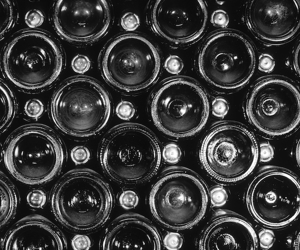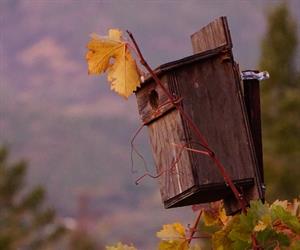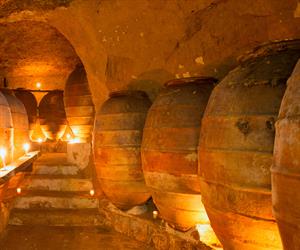In 1976, vintners witnessed one of the most shocking upsets in winemaking history. Prior to that year, West Coast vineyards had been producing excellent wines, but few traditional European tastemakers paid any notice to the upstart winemakers in Northern California.
In the mid-1970s, a British wine merchant named Steven Spurrier organized a global wine tasting competition called "the Judgement of Paris." Spurrier allowed American wines to be included, but he himself believed that they would do poorly; in his shop, he only sold French wines.
However, to his surprise, a Napa Valley wine outranked French vintages at the tasting competition. During a blind tasting, California wines were rated the best in every category, shocking French winemakers—long considered the best in the world—and surprising wine lovers the world over. Napa Valley showed the winemaking world the power of the California terroir with unparalleled Cabernet Sauvignons, which continue to delight and surprise gourmands all over the globe.
The History of Cabernet Sauvignon
The origin of Cabernet Sauvignon was unknown until 1996 when a group of wine researchers at UC Davis discovered the origins of this variety of grape. In the seventeenth century, in the southwest of France, a red Cabernet Franc grape plant and a Sauvignon blanc grape plant accidentally bred, creating the birth of what is now the most popular grape throughout the world.
Cabernet Sauvignon soon became adopted in many parts of France by winemakers searching for plants that were more durable and easier to grow. It soon became the champion in the Bordeaux region. Winemakers loved the grapes because of their perfect level of tannins, allowing them to age wonderfully. They also noticed that the wine aged beautifully in oak because the oak introduced new flavors to the wine. Cabernet Sauvignon grapes are known for thick and durable skin, making them suitable for the Bordeaux region while having delicious tasting notes.
Bordeaux wines were being enjoyed by people all around the world. Since Bordeaux wines were in close proximity to the ocean, they were more accessible to trading ships, unlike other inland regions. As Bordeaux labels became recognized around the world, so did Cabernet Sauvignon.
Napa Valley’s Impact on New World Cabernet Sauvignon
Cabernet Sauvignon quickly began to spread across the world, and more and more vineyards began to grow them. However, no region revolutionized the wine industry with the creation of Cabernet Sauvignon like Napa Valley. In 1976, a Cabernet Sauvignon from Stags’ Leap in Napa Valley beat out the top Bordeaux Chateaus in the 1976 Judgement of Paris in a blind taste test. Soon after, Napa Valley Cabernet Sauvignon was launched into the world, and it became popular at steakhouses worldwide. In 1985, the well-known Bordeaux wine critic, Robert Parker, awarded the 1985 Groth Napa Valley Cabernet Sauvignon a perfect 100-point score.
In 1990, Cabernet Sauvignon became the 8th most grown grape in the world. By 2010, it became the most popular grape variety. To this day, there are more than 742,000 acres of Cabernet Sauvignon planted around the globe. In Napa Valley and Sonoma County alone, there were over 24,000 acres in 2016, with more than 566,500 tons of grapes crushed. Now, Napa Valley has a decades-long reputation for its delicious and ultra-premium Cabernet Sauvignons.
Why Do Wine Enthusiasts Love Cabernet Sauvignon?
Cabernet Sauvignon is known for its dark color, full-body, and alcohol content over 13.5%. Due to its limited genetic diversity, winemakers continue working on new varieties to bring out its distinctive characteristics.
Because of its depth of flavor, acidity, tannins, and age-worthiness, Cabernet Sauvignon is easy to pair with food. One of the most popular Cabernet Sauvignon food pairings is beef, such as T-bone, ribeye, or New York Strip. The fat in steak interacts with tannins and helps cuts down the grip of tannins and makes the taste more approachable.
Theorem Vineyard’s Cabernet Sauvignon
Theorem Vineyards is a proud part of our world-famous wine-growing region, as we get to share our ultra-premium Cabernet Sauvignon with people from around the world. When we purchased our Napa Valley estate in 2012, we discovered Cabernet Sauvignon vines that were originally planted in 1985—the same year that Napa Valley established itself as a world-class wine-producing region. Our team realized the superb quality of the grapes, and we used it to create our first vintage: Voir Dire. Theorem Vineyard’s Voir Dire is our flagship Cabernet Sauvignon, and it continues to be made from the remarkable 1985 vines.
Theorem Vineyard’s Hawk’s Prey is also a 100% Cabernet Sauvignon made from our Diamond Mountain estate. The Hawk’s Prey vineyard is 2.29 acres and was aged for 18 months in 65% new French oak barrels. Hawk’s Prey has an opaque purple core out to a ruby red rim. On the nose, there are elegant and complex aromas of ripe plums, milk chocolate, wild blackberries, cassis, violets, warm freshly tilled earth, and baking spice.
Schedule Your Visit to Theorem Vineyards Today!
Experience the winemaking process of Cabernet Sauvignon firsthand at Theorem Vineyards. With the restoration of our historic 1800s estate in the Diamond Mountain District AVA, we seek to uncover the truth of this land through wines that capture the beauty and spirit of this magical place. We are proud to share the creation of our ultra-premium Cabernet Sauvignon with people across the world, and we would love to share it with you on a tour of Theorem Vineyards.
Call us today at (707) 942-4254 to schedule your tour at Theorem Vineyards today!





